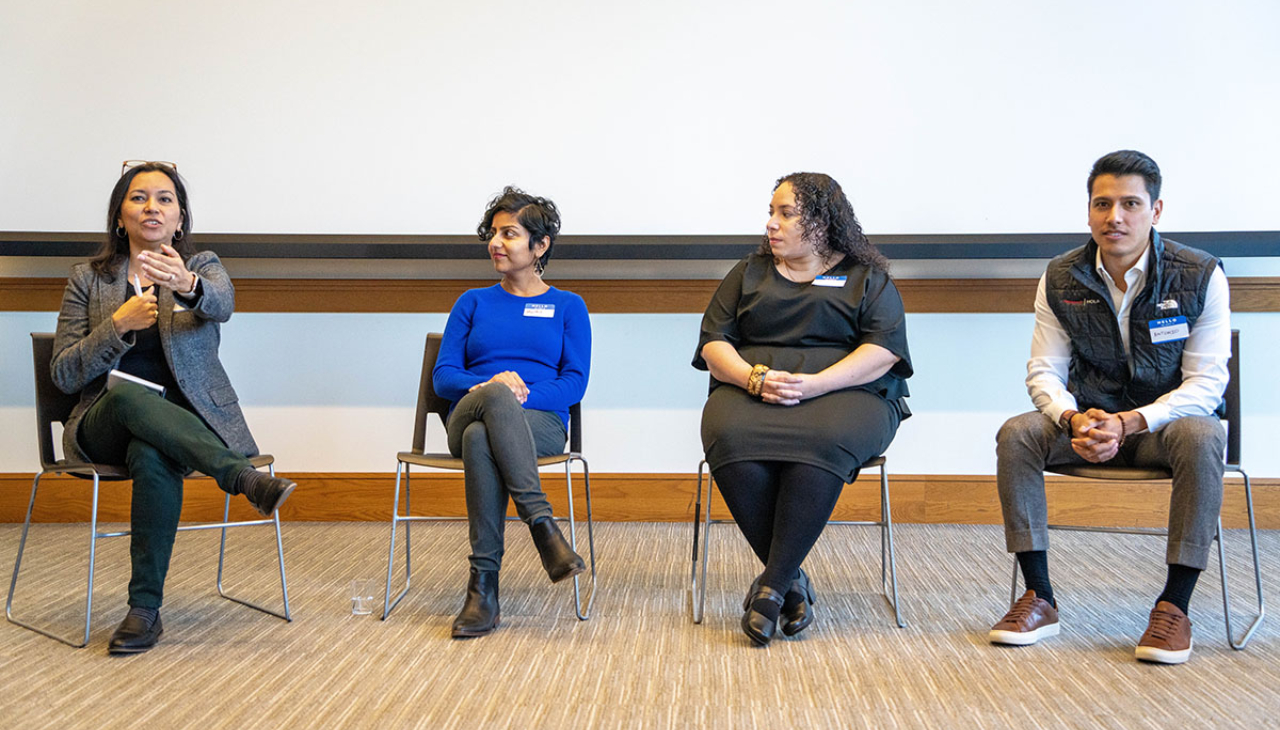
How to run a successful ERG, as told to by three ERG Leaders
At the Annual ERG and Diversity Leadership Summit, a panel consisting of three Employee Resource Groups leaders discussed the groups, their purpose and impacts
On Dec. 2, Prospanica Philadelphia hosted its 5th Annual ERG and Diversity Leadership Summit at Drexel University’s Lebow College of Business. The event featured a panel with leaders from different Employee Resource Groups (ERGs).
The panelists were Ángela Díaz Wise, Senior Manager of Operations Audit at Comcast; Antonio Bryant, Deal Lead for the Corporate Development and Venture Investing team at Vanguard; and Maithili Pradhan, Asian Community Lead for the Global Inclusion Programs and Employee Resource Groups at Google. The panel was moderated by Maria Cristina Rios.
The panelists discussed many topics, including starting an ERG and cross-collaboration, beginning with the pandemic's effect on their ERG.
Bryant responded that the pandemic made his group’s events more inclusive. Hybrid events have allowed them to connect with the company’s global offices and increased the amount of speakers they are able to access. Both Díaz Wise and Pradhan agreed.
Díaz Wise noted that the pandemic changed the way the chapters of her ERG, Unidos, interacted with each other.
The panelists also agreed that collaborating with other ERGs is very important.
“What ERGs are trying to do is create that community, create that sense of belonging, so that you’re not feeling like the other,” said Pradhan, “So that kind of inherent sense of understanding and empathy, I think is key.”
Díaz Wise gave an example of how embracing intersectionality in her own community/ERG led to a ripple effect.
During Hispanic Heritage Month, she helped put together programming that included Latine people of all colors, especially those with indigenous roots. She did this with the help of the indigenous ERG. This led to a similar thing happening during Pride Month with the LGBTQ+ ERG, who hosted events with two-spirit people.
The ability to diversify an ERG’s leadership can come from this sort of cross-collaboration.
“I’ve also seen that really help in diversifying your ERG leadership committee itself, because you’ll see that automatically ERGs might default to having one portion of that demographic represented more heavily in the leadership space,” said Pradhan.
If, for example, the Latine ERG does events with the LGBTQ+ ERG, members whose identities intersect may be more interested in pursuing a leadership position.
Before you can have events like this, you need to have ERGs. But how do you start one?
RELATED CONTENT
Pradhan suggested that when starting out as a new ERG, get allies and work with leadership.
“Keep in mind, especially when starting a new ERG, that these are volunteer efforts from our community, from our employees in the community, that they have a day job, so they are volunteering more of their time, more of their energy. And when you start out, sometimes the goal is so large that it can quickly lead to burnout or frustration,” said Díaz Wise.
She advises leaning on leadership to avoid these outcomes.
Bryant noted that people should be patient in forming an ERG.
What does a successful ERG look like? Pradhan explained the four-prong approach to ERGs.
This approach includes professional development, community, external social impact, and business impact, highlighting that resources should be focused primarily in those areas.
Pradhan added that success looks different for each ERG and that individual ones should figure out their goals for the year are.
The hour-long discussion gave summit goers a lot of good information to take back to their own ERGs, or to get one up and running.











LEAVE A COMMENT: